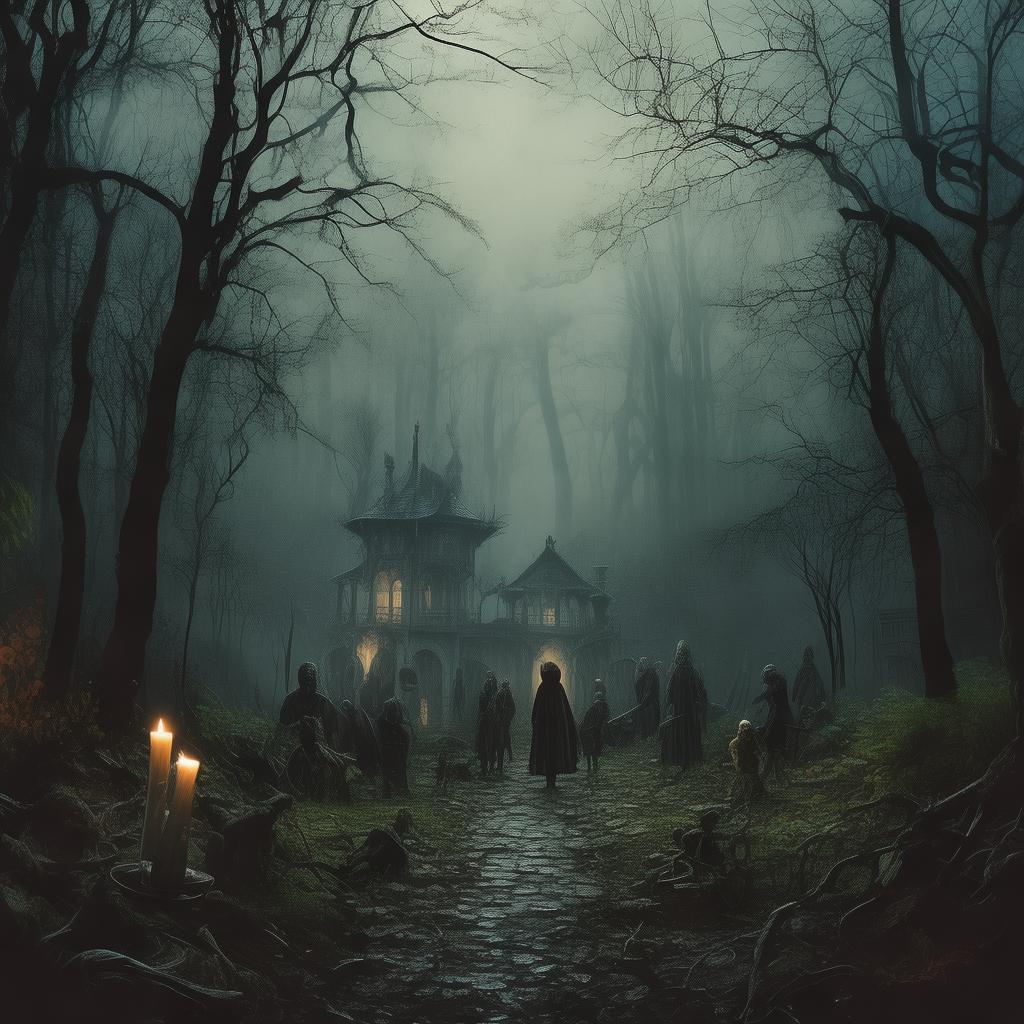The Vanishing Portrait: A Haunting Revelation
The old man's voice echoed through the dimly lit room, a whisper of dread that seemed to hang in the air like a ghost. "You must look at it," he said, his eyes wide with a mix of fear and fascination. "It's not just a picture, it's a portal to another world."
The portrait was an old oil painting, its frame weathered and cracked, the canvas faded with age. It depicted a woman in a flowing gown, her eyes locked on something unseen behind the viewer. The family had inherited it from a distant relative, but no one could recall the woman's identity or the history of the painting.
The man, Thomas, a historian by trade, had been intrigued by the portrait since he first laid eyes on it. "It's just a piece of art," he would say, but the woman's eyes seemed to follow him wherever he went. He found himself glancing at the portrait frequently, as if she were trying to communicate with him.
One evening, as the family gathered around the portrait, Thomas noticed something strange. The woman's eyes seemed to flicker, as if she were moving. He gasped, and the others turned to see what had caught his attention.
"You see that?" Thomas asked, his voice trembling. "Her eyes... they're moving."
The room fell silent. His wife, Emily, a quiet woman with a gentle demeanor, stepped forward. "It's just an optical illusion," she said, trying to brush off the fear that had settled over them. "It's just the way the light hits the painting."
But the portrait's eyes continued to flicker, and soon the entire family was fixated on the woman's gaze. It was as if she were calling out to them, trying to say something.

Days turned into weeks, and the portrait's eyes never stopped moving. The family became obsessed with it, spending hours gazing at the painting, trying to decipher the message. Thomas began to research the woman's history, but every lead he followed seemed to lead to a dead end.
One night, as they sat in the living room, Emily noticed something unusual. "Look," she said, pointing to the portrait. "Her eyes... they're looking at me."
Thomas's heart raced. "Emily, maybe it's just your imagination."
"No, it's not," she insisted. "I feel like she's watching me, like she's trying to tell me something."
As the weeks passed, the family's lives began to unravel. They started to experience strange occurrences around the house, objects moving on their own, and voices whispering in the dead of night. The children became withdrawn, and Thomas and Emily's marriage began to fray at the edges.
One evening, as Thomas was examining the portrait, he noticed a faint outline of a keyhole on the back. He tried to turn it, but it wouldn't budge. "It's locked," he said, frustration evident in his voice.
Emily approached the painting. "What if it's locked for a reason?" she asked, her eyes wide with fear. "What if we need to unlock something?"
Thomas's curiosity got the better of him. He found a small, ornate key in a drawer and inserted it into the keyhole. The lock clicked, and the back of the portrait swung open to reveal a hidden compartment.
Inside was a small, leather-bound journal. Thomas opened it and began to read. The entries were written in a woman's hand, and they spoke of a tragic love story, a forbidden romance that had ended in heartbreak and death.
As he read, Thomas realized that the woman in the portrait was not just a historical figure; she was someone who had once lived among them. The journal spoke of a family that had been torn apart by betrayal and loss, and it seemed that the portrait was a remnant of that family's sorrow.
The family was haunted not just by the portrait's eyes, but by the secrets it held. As they delved deeper into the woman's story, they discovered that the portrait was more than a mere artifact; it was a link to a past that was still alive and well.
The climax of their discovery came when Thomas found an old photograph of the woman's family, including a young girl who bore a striking resemblance to Emily. The photograph revealed that the woman had been Emily's great-grandmother, and that the portrait had been passed down through generations.
The revelation was too much for Emily to bear. She fell into a deep depression, and the family's home became a place of sorrow and despair. The portrait's eyes continued to flicker, and the strange occurrences persisted, as if the woman's spirit was trapped within the frame, seeking release.
In the end, it was Emily who found the way to free the spirit. She realized that the woman's love story had never truly ended, and that the portrait was a vessel for her unfulfilled desires. With the help of Thomas, she performed a ritual that allowed the woman's spirit to pass on, finally finding peace.
The portrait was returned to its frame, and the family's home returned to normalcy. But the experience had changed them forever. They had learned the power of forgiveness and the importance of letting go of the past. The portrait remained in the living room, a reminder of the haunting revelation that had brought them to the brink of madness, but also a symbol of the strength and resilience that had allowed them to survive.
The Vanishing Portrait: A Haunting Revelation was a story of love, loss, and the supernatural, a tale that would be told for generations, a reminder that some secrets are best left buried.
✨ Original Statement ✨
All articles published on this website (including but not limited to text, images, videos, and other content) are original or authorized for reposting and are protected by relevant laws. Without the explicit written permission of this website, no individual or organization may copy, modify, repost, or use the content for commercial purposes.
If you need to quote or cooperate, please contact this site for authorization. We reserve the right to pursue legal responsibility for any unauthorized use.
Hereby declared.









